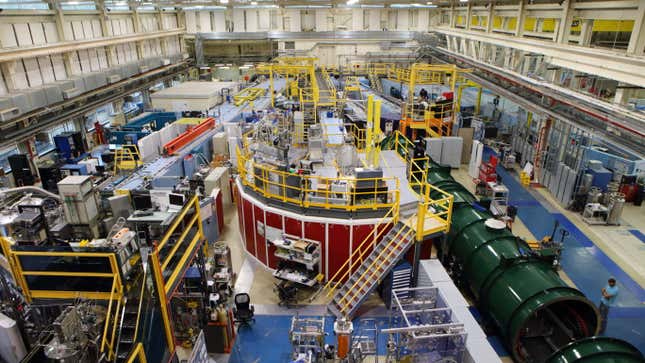
A small-scale nuclear reactor at a government neutron research facility was shut down last week after it began to spew elevated amounts of ionizing radiation. No employees received dangerous doses of radiation, according to officials, who are now devising a plan to determine the cause of the leak.
The incident happened on February 3 at the NIST (National Institute of Standards and Technology) Center for Neutron Research in Gaithersburg, Maryland, according to a statement put out two days later. The reactor was shut down and placed in a safety mode, and it won’t return to service until the “cause of the elevated radiation levels is determined and corrected,” per the statement.
“A total of 10 trained radiation workers received elevated doses,” a NIST spokesperson said in an email. The affected individuals “were immediately decontaminated” and “cleared to go home that same evening.”
NIST officials are still analyzing the data to provide exact dosage figures, “but we do know that the release was well below the regulatory limits and the community is safe,” the spokesperson added.
Neutron research stations churn out neutrons, a subatomic particle, for use in a wide range of applications, from physics, biology, medicine, and engineering through to petroleum exploration and the development of nuclear weapons. NCNR instruments have contributed to advances in pharmaceuticals, high-tech alloys, data storage, and other applications, according to the statement. More info about how neutrons are used can be found here.
Neutron research stations need access to thermal power, which at the NIST facility is accomplished with a miniature nuclear reactor. The research reactor at NCNR is “much smaller and less complicated than a power reactor,” wrote the spokesperson, and it “produces 20 megawatts of thermal power compared with a nuclear power reactor that produces 2,000 to 3,000 megawatts.”
The elevated levels of radiation have since dropped, while levels outside of the facility never came close to breaching regulatory and safety limits, according to NIST. Exposed workers underwent additional screening during the following day, confirming that “no employee received doses in excess of limits established for radiation workers,” according to the statement.
Quite understandably, NIST officials had to reassure jittery members of the local community, saying the lab is a “very low-risk facility,” while adding consoling words from the Nuclear Regulatory Commission, which said it was “satisfied” with how the facility was shut down and that the “public around and near the facility remains safe.”
NIST officials are currently developing a plan to safely evaluate the state of the reactor, which will be followed by an investigation. Once the root cause is determined, NIST will develop and implement the required fix.
The NIST spokesperson told Gizmodo that they do not yet know how long the shutdown will last, nor how it will impact ongoing research projects at the lab.